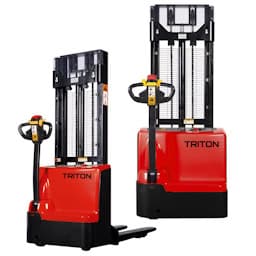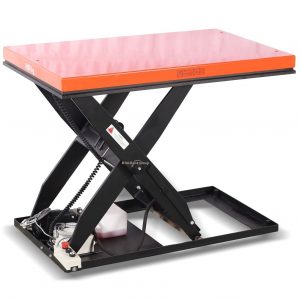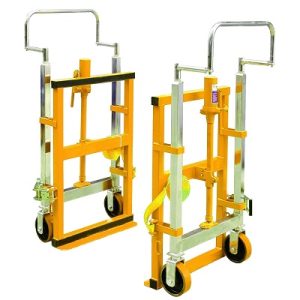Pallet trucks are one of the most commonly used pieces of equipment in many places of work across the country. They transport products from loading bays to distribution areas; they keep materials flowing through a workplace and can be described as a crucial cog in the overall machinery of a warehouse, factory or other industrial environment. From the largest warehouses of the most established brand names to the smallest workshops of the local businesses, pallet trucks are carrying out the everyday tasks that make every business tick.
It is for this reason that companies of all sizes need to fully informed of the needs of their workforce when purchasing new pallet trucks or adding to an existing fleet. Getting the right regular hand pallet truck can have a great effect on the efficiency of many working environments. Choosing the right size can often come down to calculating which of the existing pallet trucks are used the most by employees in the workplace; the ones that see the most use are most likely to need replacement or a backup. If purchasing the first pallet trucks in what is expected to be a fully functioning and successful fleet, the following guide simplifies the process of choosing a size depending on the pallets that will be used:
UK – If most of the goods which pass through the warehouse or distribution centre are from the UK, the pallets which will be used will be the standard UK size; 1000mm x 1200mm. The hand pallet trucks which deal with these types of pallets measure in at 680mm x 1000mm and are perfectly proportioned to handle the vast majority of common pallets.
Euro – The only difference between the Euro pallet trucks and the UK pump trucks is a slight variance in size. The smaller fork to fork width (540mm as opposed to 680mm) is ideally constructed to lift pallets which come from the continent; the length remains the same at 1000mm but extra-long variations are available to alter the capabilities of these trucks.
Printer – Generally only used in the printing and publishing industries, these trucks are a relative anomaly in most workplaces but are still useful to have around for special cases. The fork to fork width of these trucks is the smallest, measuring just 450mm across, but the standard 1000mm fork length remains the same.
Following these basic guidelines will ensure that the right size is chosen for the right purpose, and will guarantee many years of productivity.





